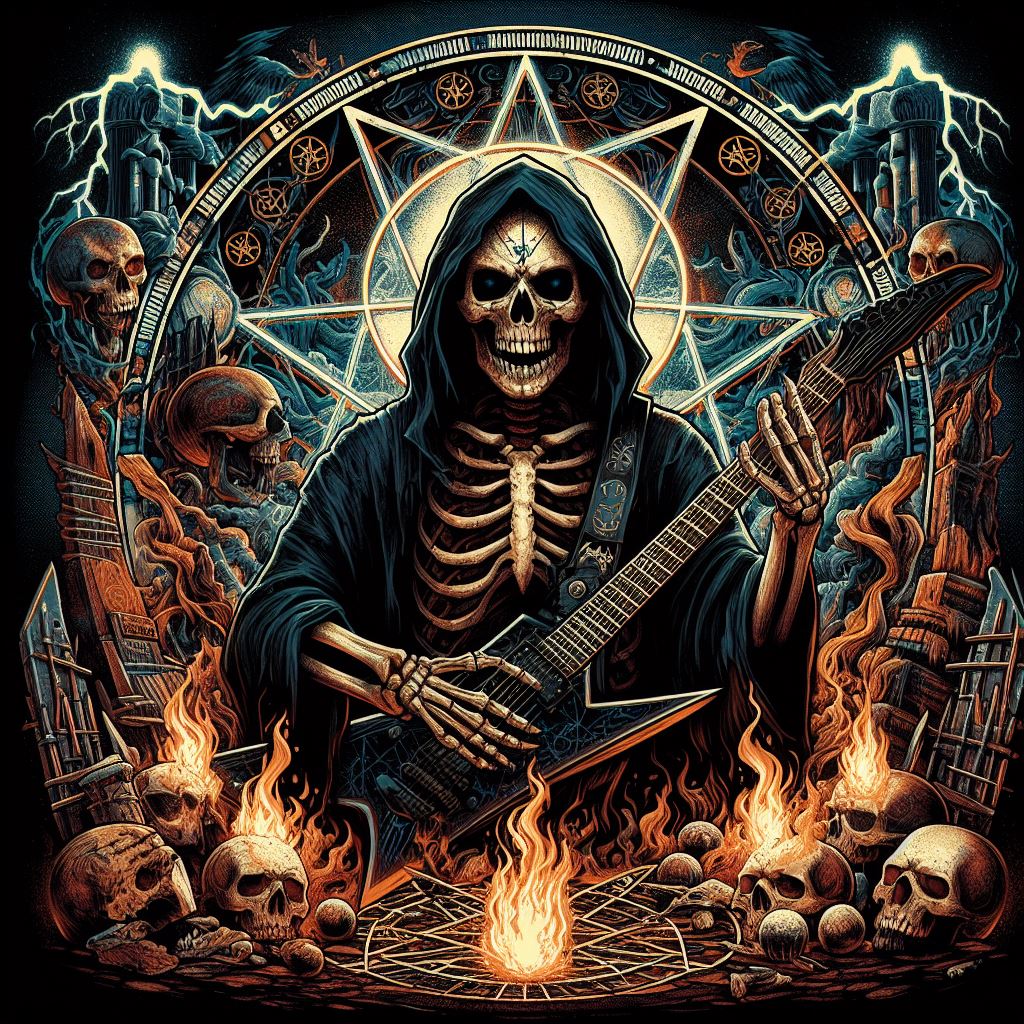Emerging from the early throes of the black metal scene in the late 1980s, Meurtrières (French for “murderesses”) stands as a pioneering force in French black metal. Their raw, atmospheric soundscapes and fiercely independent spirit helped establish the genre’s identity in Europe, laying the groundwork for a generation of French metal bands to come.
A Blackened Wellspring: Bathory, Celtic Frost, and Beyond
Meurtrières formed in 1987, drawing inspiration from the genre’s first wave. Bands like Bathory and Celtic Frost heavily influenced their sound, characterized by lo-fi production, shrieking vocals, and a focus on atmosphere over technicality. However, Meurtrières incorporated a distinctly French twist, injecting their music with a melancholic beauty and a rebellious spirit.
“Récit Sanglant” (1989): A Raw and Uncompromising Debut
Meurtrières unleashed their debut album, “Récit Sanglant” (Bloody Tale), in 1989. The album was a primitive yet potent display of black metal fury. Grainy guitars buzzed with distortion, blast beats pounded relentlessly, and vocalist Amelie’s shrieks conveyed a sense of primal rage and despair. Lyrically, the album explored themes of darkness, blasphemy, and a rejection of societal norms.
French Black Metal: A burgeoning Scene
“Récit Sanglant” resonated with a nascent French black metal scene. Meurtrières, alongside bands like Dark Funeral and Mütiilation, became torchbearers for a sound that was both raw and atmospheric, distinct from the Norwegian black metal scene that was gaining prominence at the time.
Beyond the Studio: A DIY Ethic and Live Infamy
Meurtrières was a band known for their fierce independence. They self-released their music, organizing their own tours and eschewing the trappings of the mainstream music industry. Their live shows were notorious for their intensity, with Amelie’s aggressive stage presence and the band’s wall of sound creating a truly immersive experience.
Evolution and Experimentation: “L’Abîme des Lamentations” (1992)
Meurtrières’ sophomore album, “L’Abîme des Lamentations” (The Abyss of Lamentations), released in 1992, showcased a band unafraid to experiment. While retaining their core black metal sound, they incorporated elements of doom metal, with slower tempos and a more melancholic atmosphere. This evolution hinted at the band’s potential for further exploration.
A Sudden Disappearance: The Enigma of Meurtrières (1993-Present)
Tragically, Meurtrières’ potential remained largely unfulfilled. Following the release of “L’Abîme des Lamentations,” the band abruptly disbanded in 1993. The reasons for their break-up remain unclear, with some rumors suggesting internal conflicts and others hinting at a loss of creative direction. Attempts to contact the band members have proven unsuccessful, adding to the air of mystery surrounding their disappearance.
A Legacy of Influence: Inspiring a Generation of French Metal
Despite their short-lived existence, Meurtrières’ influence on French black metal is undeniable. Bands like Peste Noire and Deathspell Omega cite them as a major inspiration. Their raw, atmospheric sound and DIY ethos paved the way for a wave of French black metal bands that continue to push the boundaries of the genre.
The Unfinished Symphony: A Lost Chapter in Black Metal History
The story of Meurtrières is one of immense potential cut short. Their two albums stand as testaments to a band brimming with raw creativity and a defiant spirit. While the reasons for their disbandment remain a mystery, their legacy as pioneers of French black metal is secure. Meurtrières’ music continues to inspire and challenge listeners, ensuring their place in the annals of black metal history.

Leave a Reply
You must be logged in to post a comment.